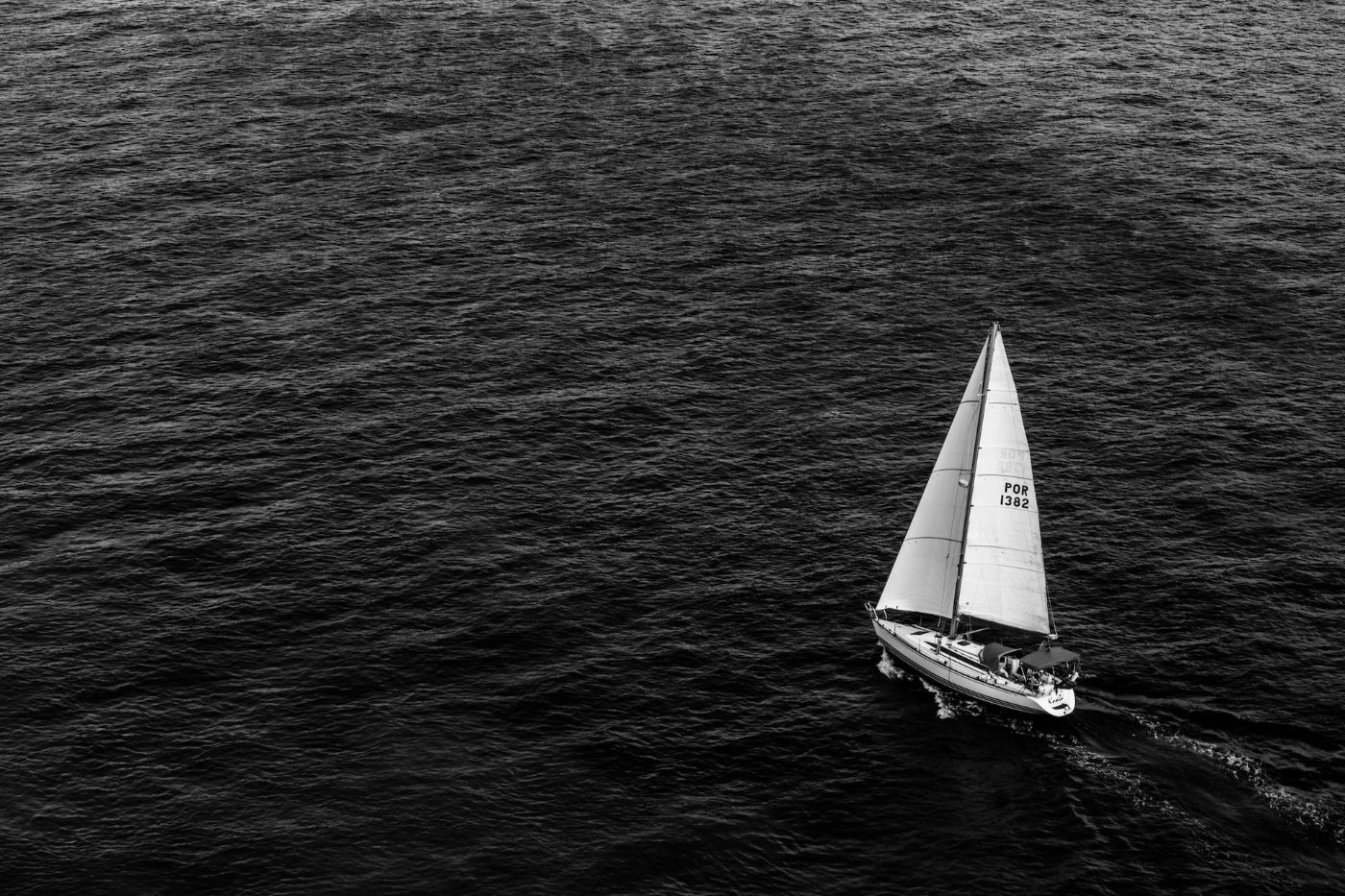Close Reach vs Broad Reach: 3 Key Differences
When you understand the differences between close reach and broad reach, it can help you make the most of the wind and get to your destination efficiently. In this article, we will look closely at these two points of sail, and see the differences between each one.
During close reach, the wind hits your boat at 45°, so your sail is perpendicular to the wind, allowing you to sail close to it and achieve maximum speed. During a broad reach, the wind hits your boat at 135°, so your sail is parallel to the wind. Since the boat is sailing away from the wind, your speed will be slower.
Sailing on a broad reach provides more comfort to the crew than sailing on a close reach. Let's find out how these two points of sail affect your comfortability while sailing.
Summary
- Close reach is suitable for sailing upwind and is the second fastest point of sail after a beam reach.
- Broad reach is a slow and more relaxed point of sail, making it ideal for cruising and enjoying the scenery.
- The boat is more maneuverable and comfortable on a broad reach than on a close reach.
- Be ready to adjust your sails and change your point of sail as the wind and weather conditions change.
- Sailing directly close to the wind is faster and more efficient than sailing away from it.

On this page:
Key Differences Between Close Reach and Broad Reach
| Key Differences | Close Reach | Beam Reach |
|---|---|---|
| Wind direction and angle | Hitting the boat from the side, at an angle of around 45 degrees | Hitting the boat from behind, at an angle of around 135 degrees |
| Sail position | Almost perpendicular to the wind | Almost parallel to the wind |
| Boat speed | Faster, as the wind is hitting the sails at a more direct angle | Slower, as the wind is not hitting the sail directly |
| Tacking | Boat turns into the wind until the sails start to luff, then turns back in the opposite direction | Boat turns at a wider angle to the wind |
| Maneuverability | Requires more skill and attention | Generally considered easier and more comfortable |
| Stability for crew members | Tends to tilt to one side, resulting in a bumpy and uncomfortable ride | More stable and level, resulting in a smoother and more comfortable ride |
1. Differences in terms of wind direction and sail position
During a close reach, the wind is hitting your boat from the side, at an angle of around 45 degrees. This means that your sail will be positioned almost perpendicular to the wind, and you will be sailing as close to the wind as possible. This allows you to get the most power out of your sail, as it is positioned to catch as much wind as possible.

On the other hand, during a broad reach, the wind is hitting your boat from behind, at an angle of around 135 degrees. This means that your sail will be positioned almost parallel to the wind, and you will be sailing away from the wind.
2. The difference with regard to boat speed
When sailing a close reach, the boat is angled towards the wind at about 45 degrees. This allows the boat to take advantage of the wind's power and sail faster, as the wind is hitting the sails at a more direct angle.
This also allows the boat to sail closer to the wind, which means that the boat can sail towards its destination without having to tack (zigzag) back and forth. Overall, you are more likely to achieve your maximum speed on close reach.

Meanwhile, during a broad reach, your boat will be sailing away from the wind, which means that your speed will be slower. This is because the wind is not hitting the sail directly, and you are relying more on the boat's momentum to maintain your speed.
Aside from this, sailing on a broad reach may require the boat to zigzag back and forth in order to reach its destination, as it cannot sail directly into the wind.
3. The difference in relation to tacking
Tacking is a sailing maneuver that involves turning the bow of the boat through the wind to change the direction of the boat. It is used to sail upwind when the wind is coming from the direction you want to go. When tacking, the sails are luffed, which means they are turned so that the wind is not filling them. This causes the boat to lose speed and momentum.
When tacking on a close reach, the boat turns into the wind until the sails start to luff, and then the boat turns back in the opposite direction. This allows the boat to move upwind at an angle. Tacking on a broad reach is similar, but the boat turns at a wider angle to the wind. This allows the boat to move upwind faster, but it also requires more skill and experience to execute properly.
Other Notable Differences Between Close Reach and Broad Reach

Sailing on a broad reach is more maneuverable
Sailing on a close reach generally requires more skill and attention than sailing on a broad reach. This is because sailing on a close reach involves sailing at an angle to the wind, which can cause the boat to heel (lean) over and require adjustments to the sails and steering to maintain balance and speed.
Additionally, sailing on a close reach may require more tacking (zig-zagging) to maintain the desired course, which can be more challenging than sailing in a straight line on a broad reach.
On the other hand, sailing on a broad reach is generally considered to be easier and more comfortable than sailing on a close reach. This is because the wind is coming from behind the boat, which can provide a more stable and consistent flow of air over the sails. It can also often result in higher speeds and less heeling than sailing on close reach.
Sailing on a broad reach is more stable for crew members
Since in close reach, the wind reaches the boat at an angle of about 45 degrees, the boat has the tendency to tilt to one side, which can result in a bumpy and uncomfortable ride for the crew. The boat may also be more prone to heeling or tipping over, especially in strong winds. However, close reach can also be a faster and more efficient way to sail, so it may be preferred in certain situations.
On the other hand, broad reach involves sailing with the wind coming from behind the boat, at an angle of about 135 degrees. This means that the boat will be more stable and level, resulting in a smoother and more comfortable ride for the crew. However, it may not be as fast or efficient, especially in light winds.
Sailing Techniques for Close Reach and Broad Reach

Below are some sailing techniques for both close reach and broad reach:
Sailing techniques during a close reach
When sailing on close reach, try to keep your sails trimmed correctly.
- Adjust your sails so that they're not too loose or too tight.
- If the sails are too loose, they won't catch enough wind, and if they're too tight, they'll create too much drag.
- Avoid pinching, which is sailing too close to the wind and can cause your boat to slow down and lose momentum.
- Adjust your centerboard to maintain speed and lift.
- Lower the centerboard to increase lifting force and gain speed if you're going too slow.
- Raise the centerboard to reduce lifting force and slow down if you're going too fast.
Sailing techniques during a broad reach
When sailing on a broad reach, always ensure that your sails are properly trimmed. Unlike a close reach, on a broad reach, you want your sails to be slightly looser. Looser sails allow the wind to flow over them smoothly and create more lift.
- Avoid being taken aback, which is when the wind comes from the opposite direction and pushes your sails backward.
- To maintain speed and lift on a broad reach, adjust your sails.
- If your boat is losing speed, adjust your sails to create more lift.
- If your boat is going too fast, adjust your sails to reduce lift and slow down.
To learn more about sail trimming, here's an ultimate cheat sheet to trim sails.
Did you find the answer to your specific question?
👍 0 👎 0



Leave a comment